Previously: The I-4 Dead Zone.
Note: Click here for content warnings.
It’s called the Yeongdeok Haunted House (영덕흉가) for a reason: It’s, well… a house located in Yeongdeok that many believe to be haunted. And not just a little haunted; a lot haunted. A run-down ruin of a building, the Yeongdeok Haunted House is usually identified as one of South Korea’s three major haunted houses, or “top three evil houses,” as they’re sometimes labeled.
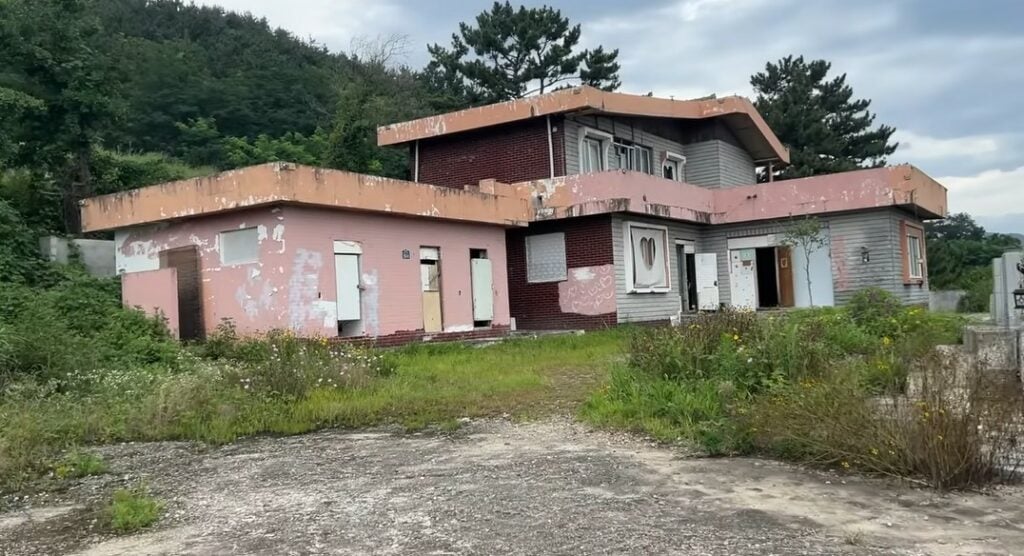
It’s also the only one of the three that’s still standing in its abandoned, potentially ghost-ridden state; the other two, Gonjiam Psychiatric Hospital and the Neulbom Garden restaurant, have gone onto… well, maybe not bigger and better things, necessarily, but they’ve definitely changed: Gonjiam was demolished in 2018 (although this fact doesn’t seem to be widely known; the fact that it’s no longer extant certainly hasn’t stopped most ghost enthusiasts and haunt hunters from continuing to refer to it as if it were still standing), and the restaurant has been remodeled and currently operates a buffet.
[Like what you read? Check out Dangerous Games To Play In The Dark, available from Chronicle Books now!]
Numerous stories have been associated with the Yeongdeok Haunted House over the course of its lifetime — stories of the strange and unusual, of spirits in the basement and curses on those who have dared to live in it. Some of these stories are more fantastical than others, of course; a few of them, however, do have a basis in fact.
Whether or not those factual origins have actually resulted in a haunting — or several hauntings — remains to be seen. But in the small fishing village of Yeongdeok, the specter of the house looms large in more than one way.
Let us count the ways, shall we?
To Look Haunted Is To Be Haunted: The Yeongdeok Haunted House Through The Years
It’s perhaps unsurprising that the Yeongdeok Haunted House has become known as — well, the Yeongdeok Haunted House: It looks haunted; therefore, people assume it is haunted.
The house isn’t huge; we’re not talking about a mansion or anything here. It is a good size, though, with two floors and quite a lot of square footage inside. The rooftop is accessible, and the balconies are spacious. Nearby, there are also the remains of a handful of other, smaller, separate buildings — one that looks like it was once a restroom, for instance, and one that a few visitors in 2023 thought might have been “a shower room,” or perhaps a storage room.
For many years — at least up through 2013, according to video footage shot at that time — the house’s walls were a grimy white, caked in dust and dirt and adorned with a considerable array of graffiti. Much of the graffiti featured the number four, which makes a certain amount of sense; in Korea, as in quite a few East Asian countries and cultures, there’s a superstitious link between the number four and death: The hanja for “death”— 死 — and the character for the number four — 四 — are both pronounced as “sa,” leading to the idea that the number four is unlucky or inauspicious.
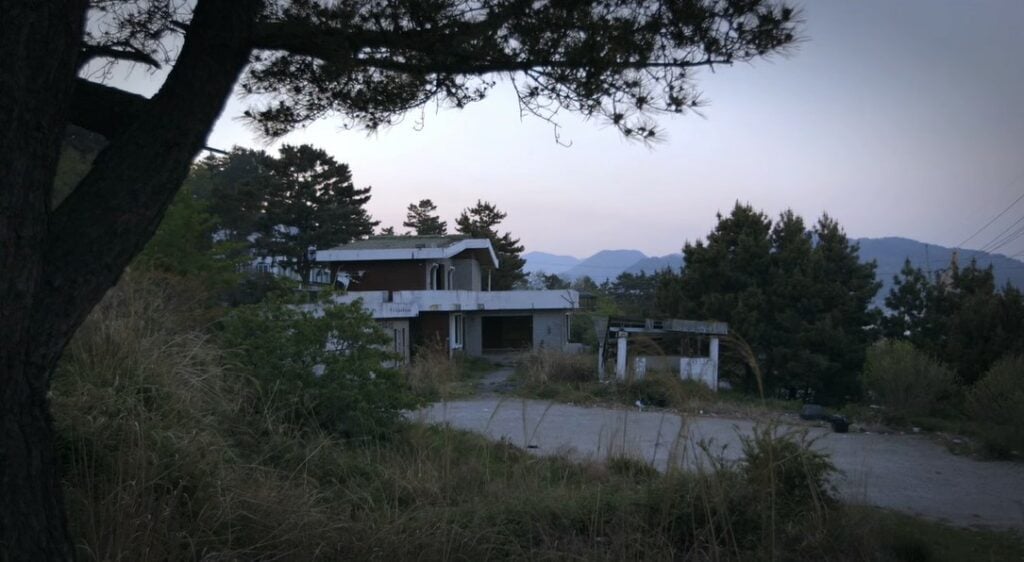
In more recent years, though, the house’s exterior seems have been painted over — and with a somewhat unexpected color choice, at that: Pink. This change had occurred at least by 2018, per video footage available of the house posted to YouTube in early July of that year, and was still present in August of 2023. The graffiti, fours and all, is no longer visible — and, indeed, has been replaced by another curious design choice: Hearts. What look like sheets of plywood with large, heart-shaped cutouts have been placed over several of the windows, and if you look closely at some of the walls, clusters of hearts can be seen lightly outlined across the pink expanse.
The insides, too, have changed within the last decade or so. In 2013, the house’s interior appears absolutely destroyed, whereas in 2023, it looks as if it’s been cleaned up somewhat. It’s definitely not what I would call restored, but the floors, damaged and dirty as they are, are mostly clear of trash and other refuse; there are even a few furnishings inside. It’s not clear whether whoever was responsible for painting the house and putting up all the hearts also made an attempt to neaten up the interior a bit, but it wouldn’t be surprising if that turned out to be the case. To what end all of these changes were made, however, remains unknown.
Even so, the house is definitely still abandoned and in disrepair, and if there’s anyone in residence, it’s most likely a squatting situation — and so, the stories persist.
The Tale of the Yeongdeok Haunted House usually goes a little something like this:
The Ghost Stories Of The Yeongdeok Haunted House
Once upon a time, there was a hill in Yeongdeok, and from the hill, there was a wonderful view of the beach and ocean nearby. And so, a house was built on that hill — a house that, positioned as it was, also had a wonderful view of the beach and ocean. This house, however, wasn’t just a home; it was also a raw fish restaurant. Its owner, typically identified as a Mr. Ham or Mr. Han, depending on the source, ran the restaurant for some time, but eventually closed it for an unknown reason and emigrated to the United States.
Curiously, though, the house was not sold, nor left in the hands of a caretaker. It was left simply to rot — and as it fell into disrepair, the stories began.
People said that a young woman had died by suicide inside the house.
They said that the spirit of a teenage girl — maybe the young woman said to have died by suicide, although perhaps not — haunted the house, and that seeing the ghost is what made the original owner close the raw fish restaurant and move.
They said that the owner hadn’t moved away at all, but had died in a terrible car crash — and that everyone who has lived in the house since has also died an awful death.
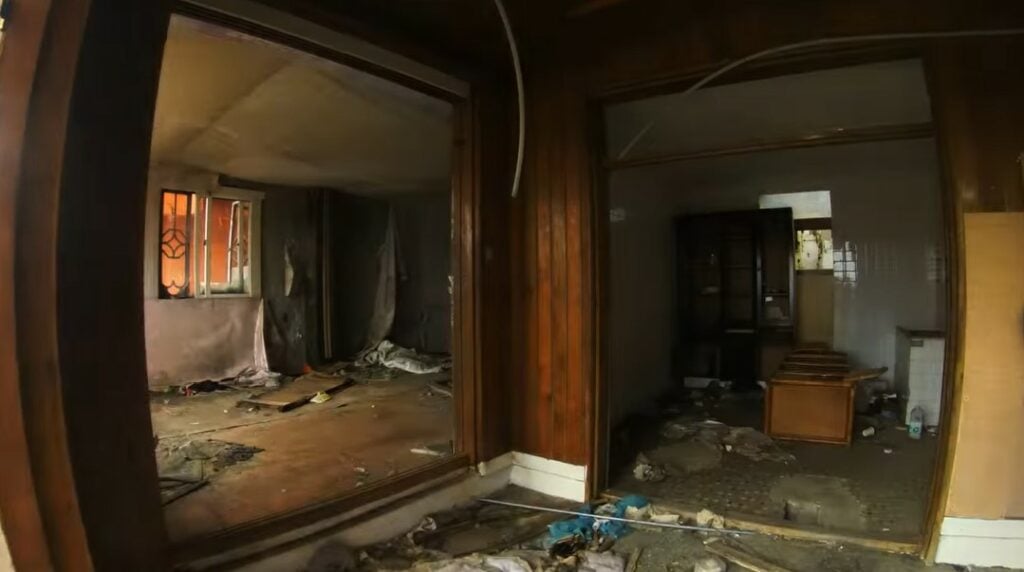
They said that a giant serpent lived in the basement — possible a guardian deity, but not necessarily.
They said that not just one spirit, but many haunted the house — spirits in great distress who had died unjustly.
They said that people hiding in the basement during the Korean War were killed when the area was bombed, and still haunting the building in which they had died.
They said, even, that the spirits haunting the house numbered in the hundreds — that they had been student soldiers who served and died in the war, trapped on this plane due to their traumatic passings.
And as the stories persisted — as they grew — so, too, did the number of people who dared to set foot on the property, or for the particularly brave, inside the house itself. They came with cameras and with recording equipment, determined to catch the ghosts in the very act of haunting — or to scare themselves silly as they startled at the place’s appearance and jumped at odd noises.
But that’s the truth behind the stories? Is there a truth, or is it all just made up?
As it turns out, it’s ultimately a little of both.
Everything Is True, Except What’s Not: Separating Fact From Fiction
Most of what’s available on the internet about the Yeongdeok Haunted House is everything we’ve already covered — that is, mostly just the rumors of what exactly is meant to have happened there, and video footage shot by thrill-seekers and content creators looking to capitalize on the house’s alleged haunting.
There are, however, a handful of clips floating around on YouTube — three of them — that hint at a larger investigation. They’re not labeled very well, and as I later found, they’re only a few minutes of footage from a much larger whole — but they seem to have a bit more to them than your standard YouTube or TikTok fare, and after a bit of digging, I was able to uncover not just what precisely they were from, but also the complete piece from which they had been clipped.
The clips are from one episode of a National Geographic television program called I Wouldn’t Go In There. This series followed Korean-American urban explorer Robert Joe, also known simply by the moniker RJ, as he traveled to various abandoned and allegedly haunted locations throughout Asia, uncovering as much of the actual history of the places as he could along the way. The show aired on Nat Geo Asia for one season in 2013 — but, oddly, the series’ archives aren’t officially available for streaming anywhere in the United States now; it’s not even on Disney+, where all of Nat Geo’s programming is hosted these days. Disney shuttered Nat Geo Asia itself in 2023.
The specific episode featuring the Yeongdeok Haunted House was called “Korea: House On The Hill”; it originally aired on Sept. 27, 2013. And, wouldn’t you know it? Once I actually knew what to look for, I was able to locate the full episode on YouTube. True, it’s quite a low-quality rip, and it’s got what I think are Indonesian subtitles layered over the original footage in a way that can’t be turned off or removed — but it got the job done.
It’s worth noting that Joe has said that he is expressly not a ghost hunter; accordingly, he approaches every story and location he looks at from a skeptic’s perspective — that is, not unlike myself, he’s more interested in finding out how these places gain their haunted reputations in the first place than in proving whether they’re actually haunted or not.
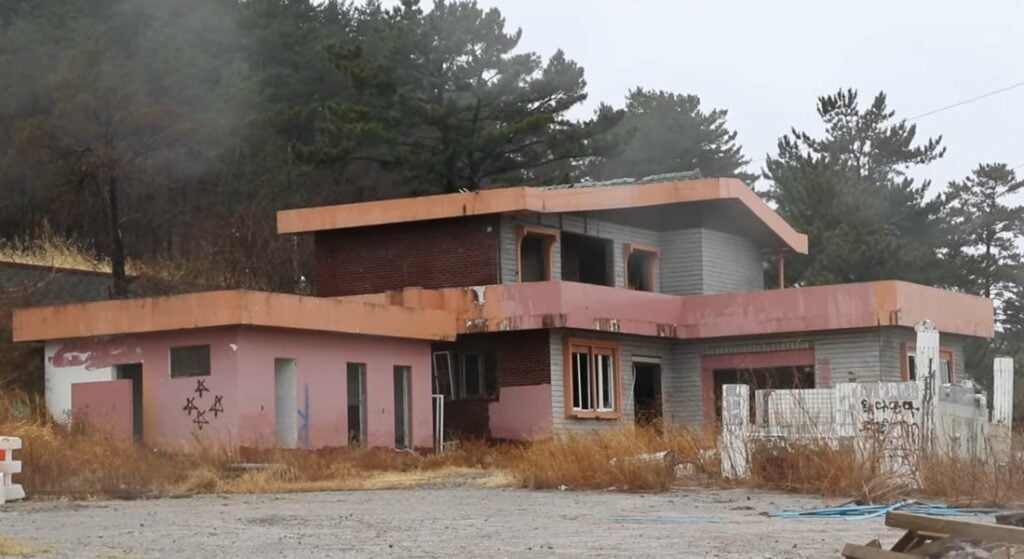
Indeed, as Joe told CNN Travel in 2013, when I Wouldn’t Go In There was originally airing:
“People might think it’s a ghost show, but it’s actually a history show. Asia has been embroiled in so much turmoil in the past 100 years, and is only just getting out of it now. We investigate places that have ghost stories, but these places are actually haunted by history. A lot of terrible things have happened.”
In the case of the Yeongdeok Haunted House, Joe did more than just visit the house itself, or even just talk to the people who live nearby (although he also did both of those things, along with a few more): He looked for — and found — someone who knew the original owner of the house.
That someone is Ahn Do Jun, who, at the time that I Wouldn’t Go In There was in production, worked at the harbor in Yeongdeok — and when Joe spoke to Ahn, he found that he didn’t just know the house’s original owner; he was a family member who had spent time inside the house as a child.
Ahn told Joe that his uncle had built the house about 30 years prior, placing its construction in the early 1980s. Before the house was built, the land was vacant; Ahn said that his uncle had even cleared all the stones himself before construction began. And although Ahn’s uncle did, in fact, live inside the house, he ultimately made it into more than just a private dwelling: Inspired in no small part by the spectacular view of the ocean it boasted, he also opened up a seafood restaurant inside, which he operated with his own father, Ahn Do Jun’s grandfather.
The restaurant, which local police later told Joe had been called Woosuk Garden, was relatively short-lived, however. Ahn told Joe that his uncle sold the house after just a few years — “four or five years,” as Ahn put it in his I Wouldn’t Go In There interview, placing the sale in the mid-to-late 1980s — and subsequently “moved away with his family.”
The next owner rented the building out to a series of other tenants, but each business venture opened up inside it — a total of four or five businesses — failed. It’s worth noting that the South Korean economy had tanked in the late 1970s and early 1980s; things were on the upswing by the early 1990s, but given the tumultuous state of the economy during this time, a relatively high number of business failures isn’t exactly surprising — particularly small businesses in a place as remote as Yeongdeok.
What Doesn’t Add Up: Pure Fiction And Rampant Rumors
So: A lot of the early parts of the Yeongdeok Haunted House’s lore do check out — it was once a seafood restaurant, but operated for only a few years in the 1980s before its owner closed up shop and moved away.
But many of the other rumors not only don’t check out, but can be completely debunked, starting with the house’s history as told by Ahn Do Jun.
For instance, the claim that the owner had died in a car crash is clearly untrue; we know what happened to him: He did, in fact, just move away. And, given that the car crash story implies that a death curse has plagued the house ever since… well, we can rule out that part of the tale, as well, since there was no car crash in the first place.
Robert Joe also spoke to local police, who stated that there’s no record of anything violent ever having occurred at or involving the house — another strike against the car crash story and its accompanying curse.
Additionally, this fact tanks the idea that a young woman died by suicide in the house, as well as the claim that seeing the ghost of a girl who had died in the house was what prompted the original owner to leave: Since there were no deaths in the house, these things obviously couldn’t have happened, and therefore obviously couldn’t contribute to a haunting in the building or on the grounds.
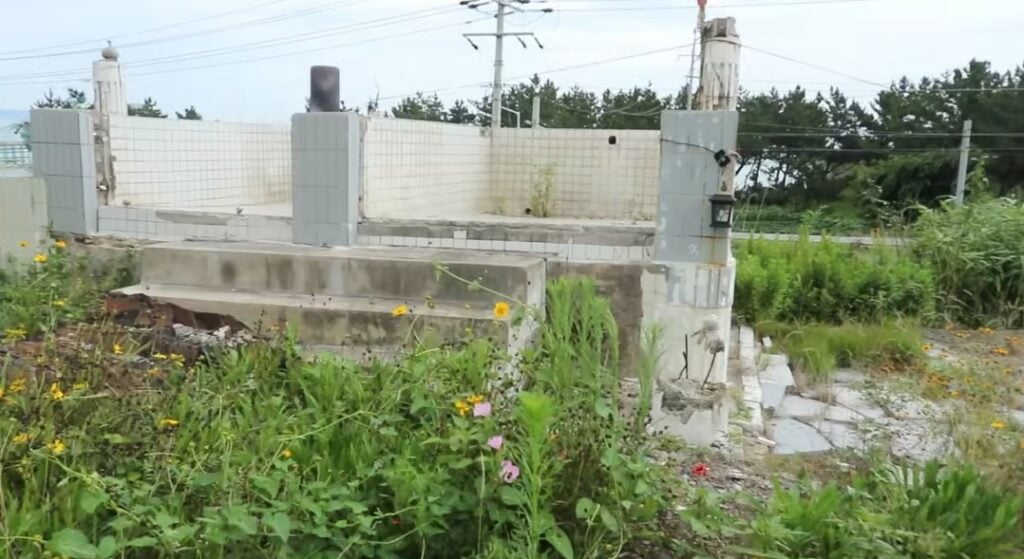
(For what it’s worth, one source I found pushing the seeing-the-ghost-made-the-owner-run-away narrative also claimed that the house had been torn down in 2020, which is demonstrably untrue, given that there’s plenty of footage of the place floating around that was shot after 2020. As such, I’m inclined to consider almost everything in that source not just untrue, but completely fabricated — made up for views.)
Where things get a little less clear-cut is when we start talking about the serpent in the basement, and about the stories connected to the Korean War. The serpent is up to an interpretation of faith; a local monk Joe spoke to was the one who described it, calling it a guardian deity watching over the house. As such, whether you believe in the serpent depends on whether you ascribe to this particular school of religious thought.
The idea that the house is haunted by people who died in a bombing while hiding the house’s basement obviously can’t be true; the Korean War was fought between 1950 and 1953, but the house wasn’t built until the 1980s — and there wasn’t anything on that land before, either, so it’s not a case of something happening in a building which was torn down, and then a haunting continuing in a new building constructed on the same spot.
But what about the ghosts of the student soldiers? Those who died unjustly and remained in torment?
Again, whether you believe the ghost part of the equation is up to you. But the history here? That’s true.
Something terrible did happen in Yeongdeok during the Korean War, just steps away from the building now known as the Yeongdeok Haunted House.
The Korean War, Operation Jangsa, And The Very Real History Of Yeongdeok
Some sources state that the soldiers allegedly haunting the Yeongdeok Haunted House died in the Battle of Incheon or Inchon. This is incorrect; the Battle of Inchon occurred on the west coast of South Korea, near Seoul — literally on the other side of the country from Yeongdeok, which is on the east coast.
But at the same time the markedly successful Inchon Landing operation of the Battle of Inchon was underway — Sept. 15 through Sept. 19, 1950 — a different operation was also occurring on the beaches at Yeongdeok: the UN Forces landing operation called Operation Order 174, or Operation Jangsa Landing of what’s now known as the Battle of Jangsari. And although Inchon Landing constituted a great victory, Operation Jangsa went… very differently.
Officially, the primary goal of Operation Jangsa was to use hit-and-run tactics to disrupt North Korean Army supply routes. It’s also sometimes said that a “minor objective” was to draw away the North Korean Army’s attention from Incheon to ensure the success of Inchon landing. However, if you talk to the survivors of Operation Jangsa, many of them will tell you, as they told Robert Joe, that they’re certain this so-called “minor objective” was, in fact, the primary goal — and that their lives were essentially sacrificed in order to provide a decoy.
The South Korean battalion who made the landing at Jangsa Beach consisted almost entirely of Student Volunteer Forces soldiers — young people in their teens and early 20s who were, as survivors generally report, dramatically under-armed and under-prepared. The landing was made on the morning of Sept. 15, 1950 — notably behind schedule due to a typhoon, and therefore not under the cover of night, as was intended, but rather in broad daylight.
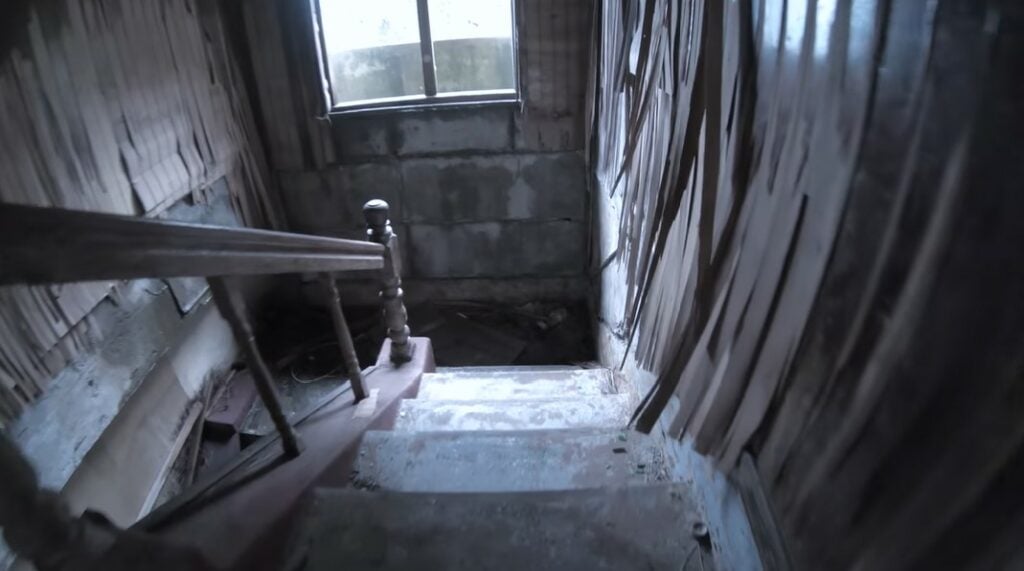
Hundreds died. The official number is usually put at 139 people and 92 injured on the South Korean side, with anywhere between 120 and 270 dead on the North Korean side— but it’s also generally accepted that the actual death toll was much higher than the officially-stated figure.
And, on the other side of the country, the Battle of Inchon was won — many believe at the expense of all those lives.
If Operation Jangsa was meant to be a decoy — to draw North Korean troops away from Incheon to ensure that the Battle of Inchon was a success — then yes, it achieved its goals. It, too, could be considered a “success.” But the human cost of Operation Jangsa will never make it anything other than a tragedy on a massive scale.
And here is where the Yeongdeok Haunted House comes back into the story: The remains of those who died during Operation Jangsa were reportedly gathered up and buried at the base of a large hill in Yeongdeok — the hill just behind where that very house would eventually be constructed. There are no markers; there are no names. That hill is, effectively, a largescale, unmarked, mass grave.
What’s more, this entire battle had been largely forgotten until fairly recently. The survivors who spoke with Robert Joe for I Wouldn’t Go In There expressed frustration and grief over the fact that so few Koreans knew about what had happened at Yeongdoek during the war—about what they had been through, and about the lives that had been lost during it.
There’s now a memorial park and museum dedicated to those who served in Operation Jangsa in Yeongdeok, but it still quite a few years off at the time that Joe spoke to these survivors. The basic plans had been drawn up a few years earlier, 2008, but construction had only just begun: It was 2012 before the building commenced. The complex itself eventually opened in 2020 — a full 70 years after the event it memorializes occurred.
Efforts are finally being made to bring this battle back into collective memory — but the road is long, and it will take much time to travel.
The Truth Of The House On The Hill
So: That’s where this story leaves us — with a derelict property full of rumors, beneath which a kernel of truth lies.
It’s a not-uncommon situation; as I’ve remarked several times in the past, ghost stories can and do become a way for humans to process things that feel too horrific for us to otherwise grapple with — a way to give something nebulous a shape, to make something vast into a manageable size.
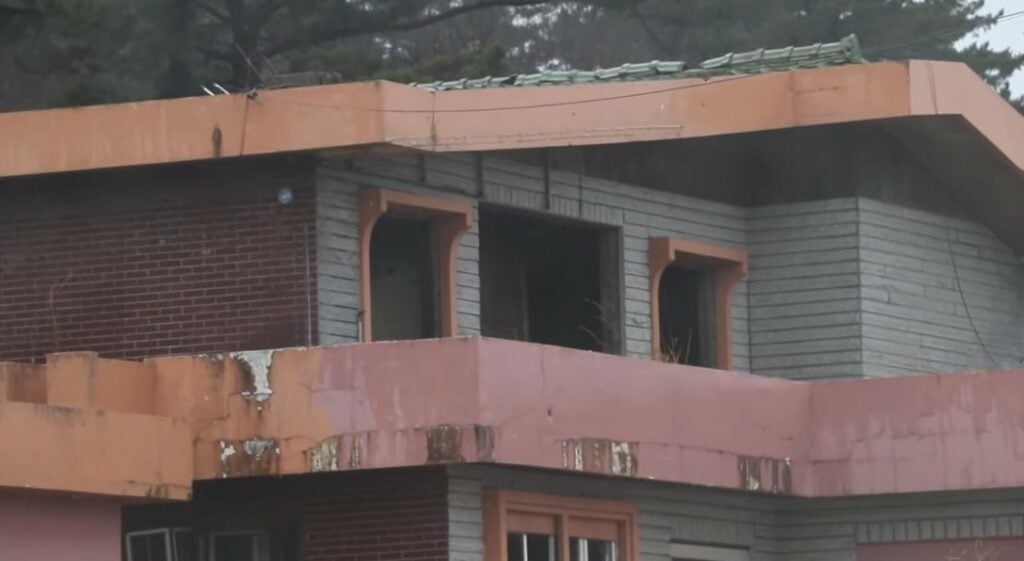
The current status of the Yeongdeok Haunted House as a property isn’t clear; information about who owns it isn’t widely available — assuming it even is still owned by someone. It’s not known whether the coat of colorful paint or the hearts were in service of bigger plans, or whether those plans have dried up or are still in process.
But the house is still there, on the hill, overlooking the ocean.
You can drive by it, if you like.
You can even pull over and take a closer look, if you’re feeling brave, although it’s best not to venture inside for a wide variety of reasons.
There might not be a serpent in the basement — but the house still holds the memories of the land on which it stands.
And those memories will persist, whether or not the Yeongdeok Haunted House itself remains.
***
Follow The Ghost In My Machine on Bluesky @GhostMachine13.bsky.social, Twitter @GhostMachine13, and Facebook @TheGhostInMyMachine. And for more games, don’t forget to check out Dangerous Games To Play In The Dark, available now from Chronicle Books!
[Screenshots via HJEvelyn (1, 5), natgeoasia (2), Somniphobe (3, 6), Cinesim Media (4, 7)/YouTube]
CW: Suicide, war.
Leave a Reply